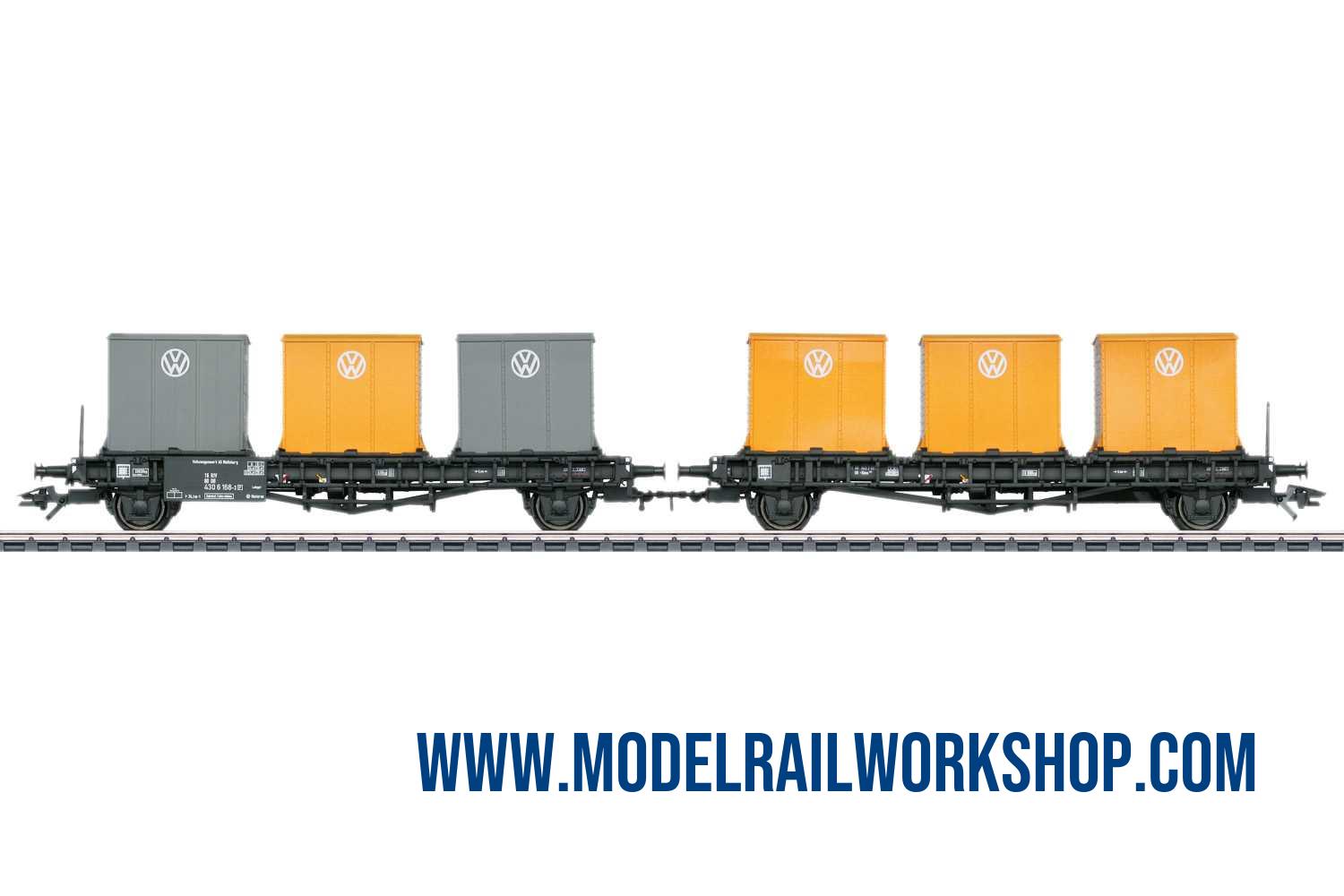
| KEY DATA | |
|---|---|
| Product Name | 46663 Twin container cars with three coloured containers |
| Object type | Car-Container |
| Product Line | Märklin |
| Era | 1970-1990 (IV) |
| Manufactured years | 2022-2024 |
| Text on object | VW logos |
| Number on object | ??? |
| Classification | Klms 440 |
| Type of housing | Synthetic |
| Length | 28.2 cm |
| Technology | - |
| Railway company | DE-DB |
| Märklin RRP (Year) | 95€ (2024) |
| Url to Märklin | Klick to GoTo www.maerklin.de |
| Description | |
|---|---|